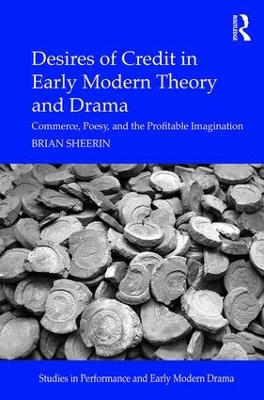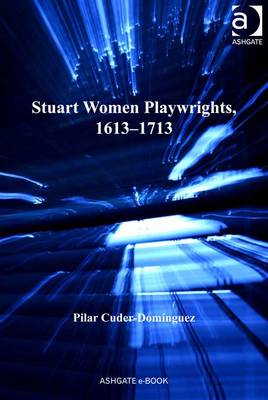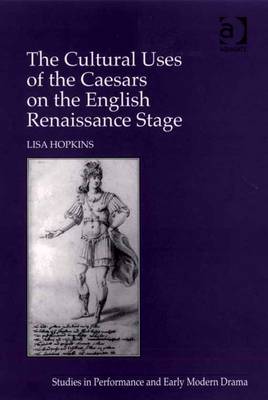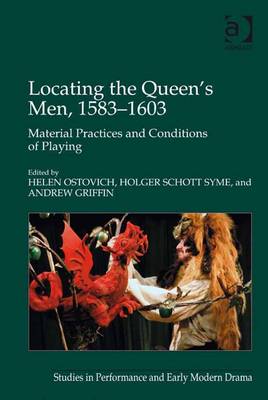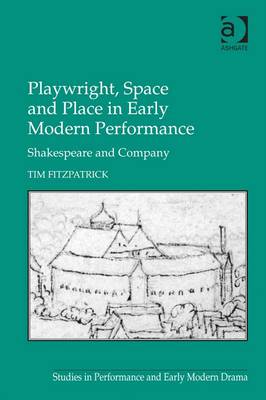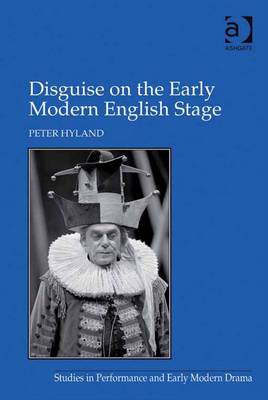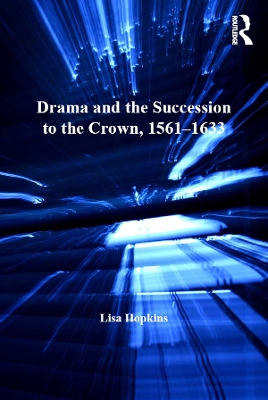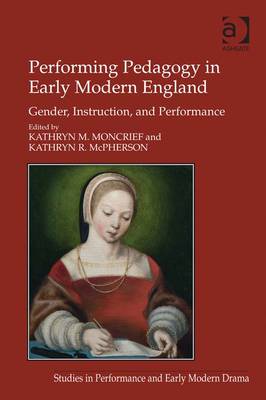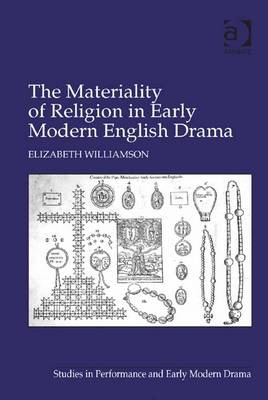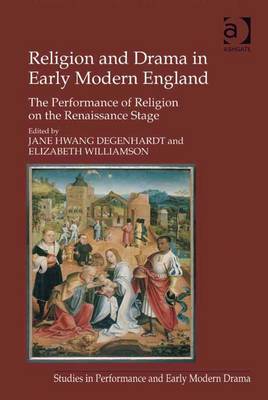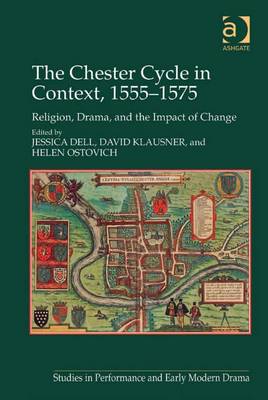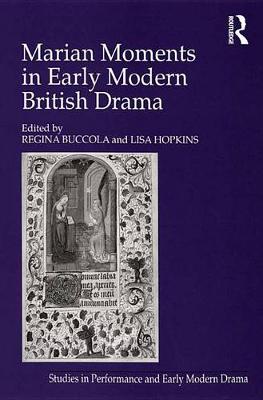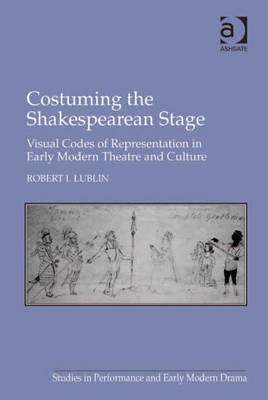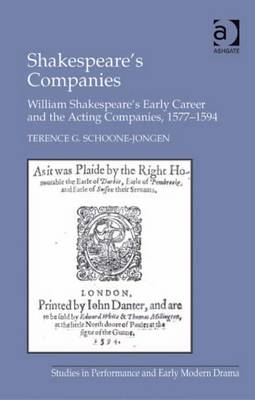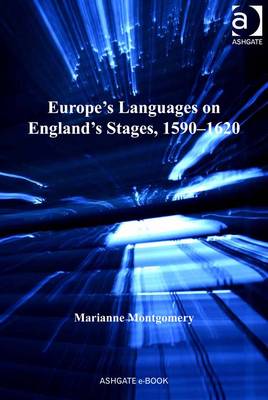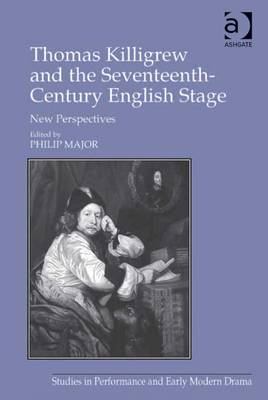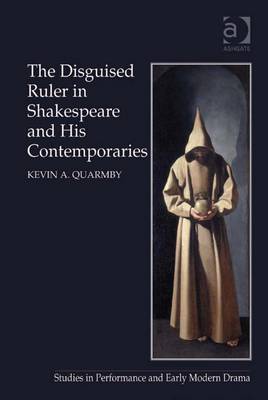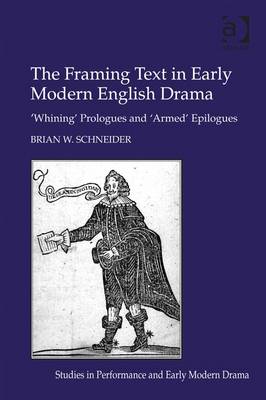Studies in Performance and Early Modern Drama
22 total works
In the field of seventeenth-century English drama, women participated not only as spectators or readers, but more and more as patronesses, as playwrights, and later on as actresses and even as managers. This study examines English women writers' tragedies and tragicomedies in the seventeenth century, specifically between 1613 and 1713, which represent the publication dates of the first original tragedy (Elizabeth Cary's The Tragedy of Mariam) and the last one (Anne Finch's Aristomenes) written by a Stuart woman playwright. Through this one-hundred year period, major changes in dramatic form and ideology are traced in women's tragedies and tragicomedies.
In examining the whole of the century from a gender perspective, this project breaks away from conventional approaches to the subject, which tend to establish an unbridgeable gap between the early Stuart period and the Restoration. All in all, this study represents a major overhaul of current theories of the evolution of English drama as well as offering an unprecedented reconstruction of the genealogy of seventeenth-century English women playwrights.
The Cultural Uses of the Caesars on the English Renaissance Stage
by Lisa Hopkins
Caesarian power was a crucial context in the Renaissance, as rulers in Europe, Russia and Turkey all sought to appropriate Caesarian imagery and authority, but it has been surprisingly little explored in scholarship. In this study Lisa Hopkins explores the way in which the stories of the Caesars, and of the Julio-Claudians in particular, can be used to figure the stories of English rulers on the Renaissance stage. Analyzing plays by Shakespeare and a number of other playwrights of the period, she demonstrates how early modern English dramatists, using Roman modes of literary representation as cover, commented on the issues of the day and critiqued contemporary monarchs.
Locating the Queen's Men, 1583-1603
Locating the Queen's Men presents new and groundbreaking essays on early modern England's most prominent acting company, from their establishment in 1583 into the 1590s. Offering a far more detailed critical engagement with the plays than is available elsewhere, this volume situates the company in the theatrical and economic context of their time.
The essays gathered here focus on four different aspects: playing spaces, repertory, play-types, and performance style, beginning with essays devoted to touring conditions, performances in university towns, London inns and theatres, and the patronage system under Queen Elizabeth. Repertory studies, unique to this volume, consider the elements of the company's distinctive style, and how this style may have influenced, for example, Shakespeare's Henry V. Contributors explore two distinct genres, the morality and the history play, especially focussing on the use of stock characters and on male/female relationships.
Revising standard accounts of late Elizabeth theatre history, this collection shows that the Queen's Men, often understood as the last rear-guard of the old theatre, were a vital force that enjoyed continued success in the provinces and in London, representative of the abiding appeal of an older, more ostentatiously theatrical form of drama.
Marriage, Performance, and Politics at the Jacobean Court
by Kevin Curran
Marriage, Performance, and Politics at the Jacobean Court constitutes the first full-length study of Jacobean nuptial performance, a hitherto unexplored branch of early modern theater consisting of masques and entertainments performed for high-profile weddings. Scripted by such writers as Ben Jonson, Thomas Campion, George Chapman, and Francis Beaumont, these entertainments were mounted for some of the most significant political events of James's English reign.
Here Kevin Curran analyzes all six of the elite weddings celebrated at the Jacobean court, reading the masques and entertainments that headlined these events alongside contemporaneously produced panegyrics, festival books, sermons, parliamentary speeches, and other sources. The study shows how, collectively, wedding entertainments turned the idea of union into a politically versatile category of national representation and offered new ways of imagining a specifically Jacobean form of national identity by doing so.
Analyzing Elizabethan and Jacobean playtexts for their spatial implications, this innovative study discloses the extent to which the resources and constraints of public playhouse buildings affected the construction of the fictional worlds of early modern plays.
The study argues that playwrights were writing with foresight, inscribing the constraints and resources of the stages into their texts. It goes further, to posit that Shakespeare and his playwright-contemporaries adhered to a set of generic conventions, rather than specific local company practices, about how space and place were to be related in performance: the playwrights constituted thus an overarching virtual 'company' producing playtexts that shared features across the acting companies and playhouses.
By clarifying a sixteenth- to seventeenth-century conception of theatrical place, Tim Fitzpatrick adds a new layer of meaning to our understanding of the plays. His approach adds a new dimension to these particular documents which–though many of them are considered of great literary worth–were not originally generated for any other reason than to be performed within a specific performance context. The fact that the playwrights were aware of the features of this performance tradition makes their texts a potential mine of performance information, and casts light back on the texts themselves: if some of their meanings are 'spatial', these will have been missed by purely literary tools of analysis.
Disguise devices figure in many early modern English plays, and an examination of them clearly affords an important reflection on the growth of early theatre as well as on important aspects of the developing nation. In this study Peter Hyland considers a range of practical issues related to the performance of disguise. He goes on to examine various conceptual issues that provide a background to theatrical disguise (the relation of self and "other", the meaning of mask and performance). He looks at many disguise plays under three broad headings. He considers moral issues (the almost universal association of disguise with "evil"); social issues (sumptuary legislation, clothing, and the theatre, and constructions of class, gender and national or racial identity); and aesthetic issues (disguise as an emblem of theatre, and the significance of disguise for the dramatic artist). The study serves to examine the significant ways in which disguise devices have been used in early modern drama in England.
Performing Pedagogy in Early Modern England
Performing Pedagogy in Early Modern England: Gender, Instruction, and Performance features essays questioning the extent to which education, an activity pursued in the home, classroom, and the church, led to, mirrored, and was perhaps even transformed by moments of instruction on stage. This volume argues that along with the popular press, the early modern stage is also a key pedagogical site and that education-performed and performative-plays a central role in gender construction. The wealth of sixteenth- and seventeenth-century printed and manuscript documents devoted to education (parenting guides, conduct books, domestic manuals, catechisms, diaries, and autobiographical writings) encourages examination of how education contributed to the formation of gendered and hierarchical structures, as well as the production, reproduction, and performance of masculinity and femininity. In examining both dramatic and non-dramatic texts via aspects of performance theory, this collection explores the ways education instilled formal academic knowledge, but also elucidates how educational practices disciplined students as members of their social realm, citizens of a nation, and representatives of their gender.
The Materiality of Religion in Early Modern English Drama
by Dr Elizabeth Williamson
The Materiality of Religion in Early Modern English Drama is the first book to present a detailed examination of early modern theatrical properties informed by the complexity of post-Reformation religious practice. Although English Protestant reformers set out to destroy all vestiges of Catholic idolatry, public theater companies frequently used stage properties to draw attention to the remnants of traditional religion as well as the persistent materiality of post-Reformation worship. The Materiality of Religion in Early Modern English Drama explores the relationship between popular culture and theatrical performance by considering the social history and dramatic function of these properties, addressing their role as objects of devotion, idolatry, and remembrance on the professional stage. Rather than being aligned with identifiably Catholic or Protestant values, the author reveals how religious stage properties functioned as fulcrums around which more subtle debates about the status of Christian worship played out.
Given the relative lack of existing documentation on stage properties, The Materiality of Religion in Early Modern English Drama employs a wide range of source materials-including inventories published in the Records of Early English Drama (REED) volumes-to account for the material presence of these objects on the public stage. By combining historical research on popular religion with detailed readings of the scripts themselves, the book fills a gap in our knowledge about the physical qualities of the stage properties used in early modern productions.
Tracing the theater's appropriation of highly charged religious properties, The Materiality of Religion in Early Modern English Drama provides a new framework for understanding the canonization of early modern plays, especially those of Shakespeare.
Religion and Drama in Early Modern England
Offering fuller understandings of both dramatic representations and the complexities of religious culture, this collection reveals the ways in which religion and performance were inextricably linked in early modern England. Its readings extend beyond the interpretation of straightforward religious allusions and suggest new avenues for theorizing the dynamic relationship between religious representations and dramatic ones. By addressing the particular ways in which commercial drama adapted the sensory aspects of religious experience to its own symbolic systems, the volume enacts a methodological shift towards a more nuanced semiotics of theatrical performance.
Covering plays by a wide range of dramatists, including Shakespeare, individual essays explore the material conditions of performance, the intricate resonances between dramatic performance and religious ceremonies, and the multiple valences of religious references in early modern plays. Additionally, Religion and Drama in Early Modern England reveals the theater's broad interpretation of post-Reformation Christian practice, as well as its engagement with the religions of Islam, Judaism and paganism.
The Chester Cycle in Context, 1555–1575
The Chester Cycle in Context, 1555-1575 considers the implications of recent archival research which has profoundly changed our view of the continuation of performances of Chester's civic biblical play cycle into the reign of Elizabeth I. Scholars now view the decline and ultimate abandonment of civic religious drama as the result of a complex network of local pressures, heavily dependent upon individual civic and ecclesiastical authorities, rather than a result of a nation-wide policy of suppression, as had previously been assumed.
Approaching individual plays in the Chester cycle in the light of this new understanding, this volume investigates how new sources shift and clarify our understanding of the last years of cycle's performance. Contributors analyze how the city attempted to preserve its dramatic traditions by making adjustments to the plays in the face of protestant objections to the stage portrayal of such concepts as transubstantiation, the life of the Virgin Mary, or such apocryphal stories as the midwives at the nativity. Many of the essays focus on the performance of 1572 which took place despite the objections of the bishop of Chester and in the face of complaints from protestant churchmen and citizens.
Although scholars have long considered the material conditions surrounding the production of early modern drama, until now, no book-length examination has sought to explain what was worn on the period's stages and, more importantly, how articles of apparel were understood when seen by contemporary audiences. Robert Lublin's new study considers royal proclamations, religious writings, paintings, woodcuts, plays, historical accounts, sermons, and legal documents to investigate what Shakespearean actors actually wore in production and what cultural information those costumes conveyed.
Four of the chapters of Costuming the Shakespearean Stage address 'categories of seeing': visually based semiotic systems according to which costumes constructed and conveyed information on the early modern stage. The four categories include gender, social station, nationality, and religion. The fifth chapter examines one play, Thomas Middleton's A Game at Chess, to show how costumes signified across the categories of seeing to establish a play's distinctive semiotics and visual aesthetic.
Focusing on a period (c.1577-1594) that is often neglected in Elizabethan theater histories, this study considers Shakespeare's involvement with the various London acting companies before his membership in the Lord Chamberlain's Men in 1594. Locating Shakespeare in the confusing records of the early London theater scene has long been one of the many unresolved problems in Shakespeare studies and is a key issue in theatre history, Shakespeare biography, and historiography. The aim in this book is to explain, analyze, and assess the competing claims about Shakespeare's pre-1594 acting company affiliations. Schoone-Jongen does not demonstrate that one particular claim is correct but provides a possible framework for Shakespeare's activities in the 1570s and 1580s, an overview of both London and provincial playing, and then offers a detailed analysis of the historical plausibility and probability of the warring claims made by biographers, ranging from the earliest sixteenth-century references to contemporary arguments. Full chapters are devoted to four specific acting companies, their activities, and a summary and critique of the arguments for Shakespeare's involvement in them (The Queen's Men, Strange's Men, Pembroke's Men, and Sussex's Men), a further chapter is dedicated to the proposition Shakespeare's first theatrical involvement was in a recusant Lancashire household, and a final chapter focuses on arguments for Shakespeare's membership in a half dozen other companies (most prominently Leicester's Men). Shakespeare's Companies simultaneously opens up twenty years of theatrical activity to inquiry and investigation while providing a critique of Shakespearean biographers and their historical methodologies.
Though representations of alien languages on the early modern stage have usually been read as mocking, xenophobic, or at the very least extremely anxious, listening closely to these languages in the drama of Shakespeare and his contemporaries, Marianne Montgomery discerns a more complex reality. She argues instead that the drama of the early modern period holds up linguistic variety as a source of strength and offers playgoers a cosmopolitan engagement with the foreign that, while still sometimes anxious, complicates easy national distinctions.
The study surveys six of the European languages heard on London's commercial stages during the three decades between 1590 and 1620-Welsh, French, Dutch, Spanish, Irish and Latin-and the distinct sets of cultural issues that they made audible. Exploring issues of culture and performance raised by representations of European languages on the stage, this book joins and advances two critical conversations on early modern drama. It both works to recover English relations with alien cultures in the period by looking at how such encounters were staged, and treats sound and performance as essential to understanding what Europe's languages meant in the theater.
Europe's Languages on England's Stages, 1590-1620 contributes to our emerging sense of how local identities and global knowledge in early modern England were necessarily shaped by encounters with nearby lands, particularly encounters staged for aural consumption.
Thomas Killigrew and the Seventeenth-Century English Stage
Despite his significant influence as a courtier, diplomat, playwright and theatre manager, Thomas Killigrew (1612-1683) remains a comparatively elusive and neglected figure. The original essays in this interdisciplinary volume shine new light on a singular, contradictory Englishman 400 years after his birth. They increase our knowledge and deepen our understanding not only of Killigrew himself, but of seventeenth-century dramaturgy, and its complex relationship to court culture and to evolving aesthetic tastes.
The first book on Killigrew since 1930, this study re-examines the significant phases of his life and career: the little-known playwriting years of the 1630s; his long exile during the 1640s and 1650s, and its personal, political and literary repercussions; and the period following the Restoration, when, with Sir William Davenant, he enjoyed a monopoly of the London stage. These fresh accounts of Killigrew build on the recent resurgence of interest in royalists and the royalist exile, and underscore literary scholars' continued fascination with the Restoration stage. In the process, they question dominant assumptions about neatly demarcated seventeenth-century chronological, geographic and cultural boundaries. What emerges is a figure who confounds as often as he justifies traditional labels of dilettante, cavalier wit and swindler.
The Disguised Ruler in Shakespeare and his Contemporaries
by Dr. Kevin A. Quarmby
In the early seventeenth century, the London stage often portrayed a ruler covertly spying on his subjects. Traditionally deemed 'Jacobean disguised ruler plays', these works include Shakespeare's Measure for Measure, Marston's The Malcontent and The Fawn, Middleton's The Phoenix, and Sharpham's The Fleer. Commonly dated to the arrival of James I, these plays are typically viewed as synchronic commentaries on the Jacobean regime.
Kevin A. Quarmby demonstrates that the disguised ruler motif actually evolved in the 1580s. It emerged from medieval folklore and balladry, Tudor Chronicle history and European tragicomedy. Familiar on the Elizabethan stage, these incognito rulers initially offered light-hearted, romantic entertainment, only to suffer a sinister transformation as England awaited its ageing queen's demise. The disguised royal had become a dangerously voyeuristic political entity by the time James assumed the throne.
Traditional critical perspectives also disregard contemporary theatrical competition. Market demands shaped the repertories. Rivalry among playing companies guaranteed the motif's ongoing vitality. The disguised ruler's presence in a play reassured audiences; it also facilitated a subversive exploration of contemporary social and political issues. Gradually, the disguised ruler's dramatic currency faded, but the figure remained vibrant as an object of parody until the playhouses closed in the 1640s.
Though individual prologues and epilogues have been treated in depth, very little scholarship has been published on early modern framing texts as a whole. The Framing Text in Early Modern English Drama fills a gap in the literature by examining the origins of these texts, and investigating their growing importance and influence in the theatre of the period.
This topic-led discussion of prologues and epilogues deals with the origins of these texts, the difficulty of definition, and the way in which many prologues and epilogues appear to interact on such subjects as the composition of the theatre audience and the perceived place of women in such an audience. Author Brian Schneider also examines the reasons for, and the evidence leading to, the apparently sudden burgeoning of these texts after the Restoration, when prologues and epilogues grace nearly all the dramas of the time and become a virtual cottage industry of their own.
The second section-a comprehensive list of prologues and epilogues-details play titles, playwrights, theatres and theatre companies, first performance and the earliest edition in which the framing text(s) appears. It quotes the first line of the prologue and/or epilogue and uses the printer's signature to denote the page on which the texts can be found. Further information is provided in notes appended to the relevant entry. A final section deals with 'free-floating' and 'free-standing' framing texts that appear in verse collections, manuscripts, and other publications and to which no play can be positively ascribed.
Combining original analysis with carefully compiled, comprehensive reference data, The Framing Text in Early Modern English Drama provides a genuinely new angle on the drama of early modern England.
Sovereigns and Subjects in Early Modern Neo-Senecan Drama
by Dr. Daniel Cadman
Sovereigns and Subjects in Early Modern Neo-Senecan Drama examines the development of neo-Senecan drama, also known as `closet drama', during the years 1590-1613. It is the first book-length study since 1924 to consider these plays - the dramatic works of Mary Sidney, Samuel Daniel, Samuel Brandon, Fulke Greville, Sir William Alexander, and Elizabeth Cary, along with the Roman tragedies of Ben Jonson and Thomas Kyd - as a coherent group.
Daniel Cadman suggests these works interrogate the relations between sovereigns and subjects during the early modern period by engaging with the humanist discourses of republicanism and stoicism. Cadman argues that the texts under study probe various aspects of this dynamic and illuminate the ways in which stoicism and republicanism provide essential frameworks for negotiating this relationship between the marginalized courtier and the absolute sovereign. He demonstrates how aristocrats and courtiers, such as Sidney, Greville, Alexander, and Cary, were able to use the neo-Senecan form to consider aspects of their limited political agency under an absolute monarch, while others, such as Brandon and Daniel, respond to similarly marginalized positions within both political and patronage networks.
In analyzing how these plays illuminate various aspects of early modern political culture, this book addresses several gaps in the scholarship of early modern drama and explores new contexts in relation to more familiar writers, as well as extending the critical debate to include hitherto neglected authors.
